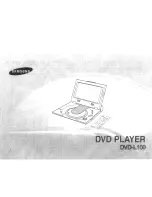
124
Numeric Parameters
Commands that require numeric parameters will
accept all commonly used decimal representations of numbers including
optional signs, decimal points, and scientific notation. Special values for
numeric parameters like MINimum, MAXimum, and DEFault are also
accepted. You can also send engineering unit suffixes with numeric
parameters (e.g., Mhz or Khz). If only specific numeric values are
accepted, the waveform generator will automatically round the input
numeric parameters. The following example demonstrates a command
with a numeric parameter option:
FREQuency:STARt {<
frequency
>|MINimum|MAXimum}
Discrete Parameters
Discrete parameters are used in the settings
where only a limited number of values (like BUS, IMMediate, EXTernal)
are accepted. They have the short and long forms just like command
keywords. You can mix upper- and lower-case letters. Query responses
will
always
return the short form in all upper-case letters. The following
example demonstrates a command with a discrete parameter:
TRIGger:SOURce {BUS|IMMediate|EXTernal}
Boolean Parameters
A Boolean parameter represents a condition that
is either true or false. For a false condition, the waveform generator
accepts “OFF” or “0” as parameter value. For a true condition, the
multimeter accepts “ON” or “1” as parameter value.
When you query a
Boolean parameter, the instrument will
always
return “0” or “1”. The
following example demonstrates a command with a Boolean parameter:
SWEep:STATe {OFF|ON}
String Parameters
A string parameter can contain any set of ASCII
characters. A string
must
begin and end with matching quotes, either
with single or double quotes. You can include the quote delimiter as part
of the string by typing it twice without any characters in between. The
following example demonstrates a command with a string parameter:
DISPlay:TEXT <
quoted string
>
Summary of Contents for G5100A
Page 5: ...5 D APPLICATION PROGRAMS 173 ...
Page 71: ...71 Schematic of Receiver ...
















































